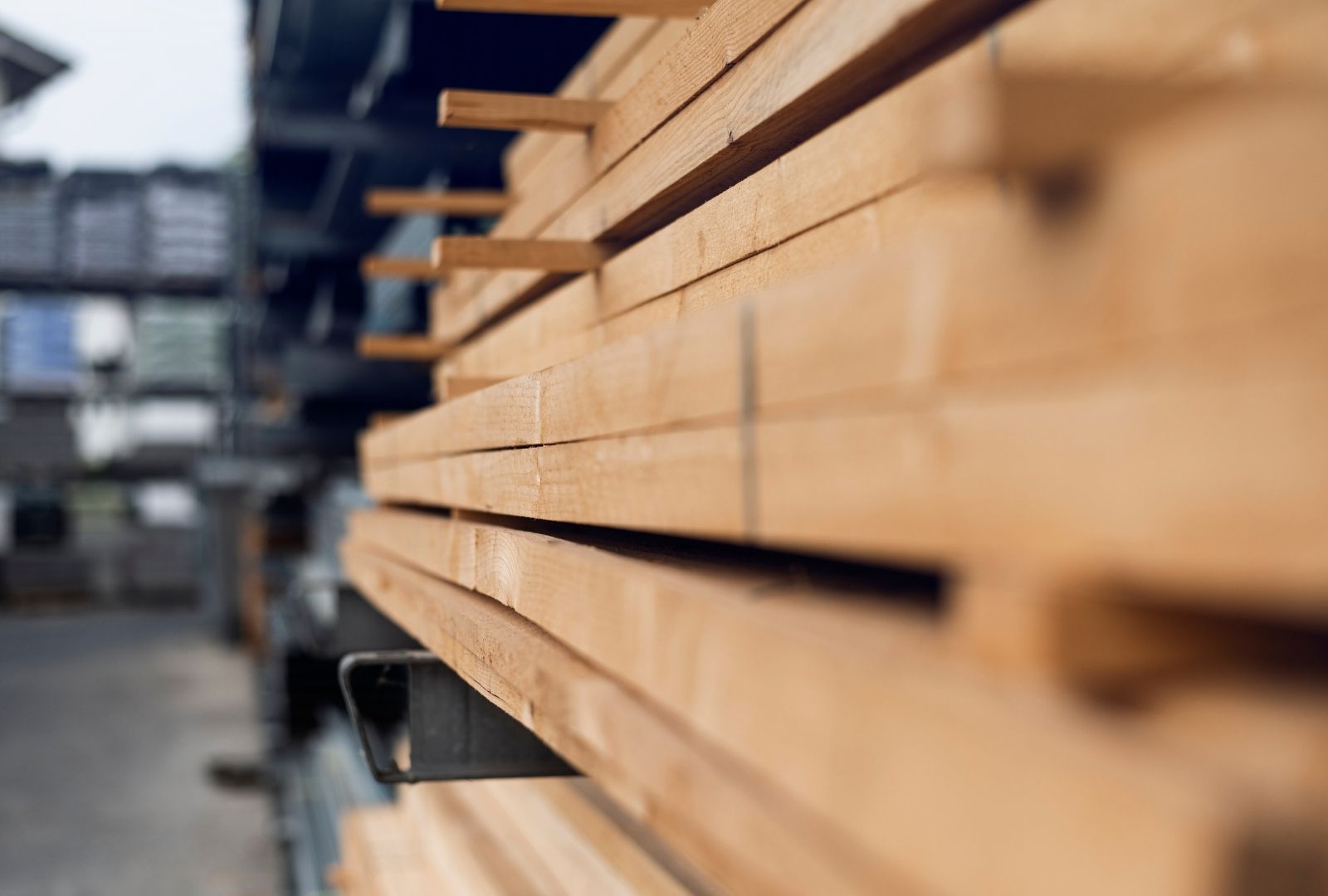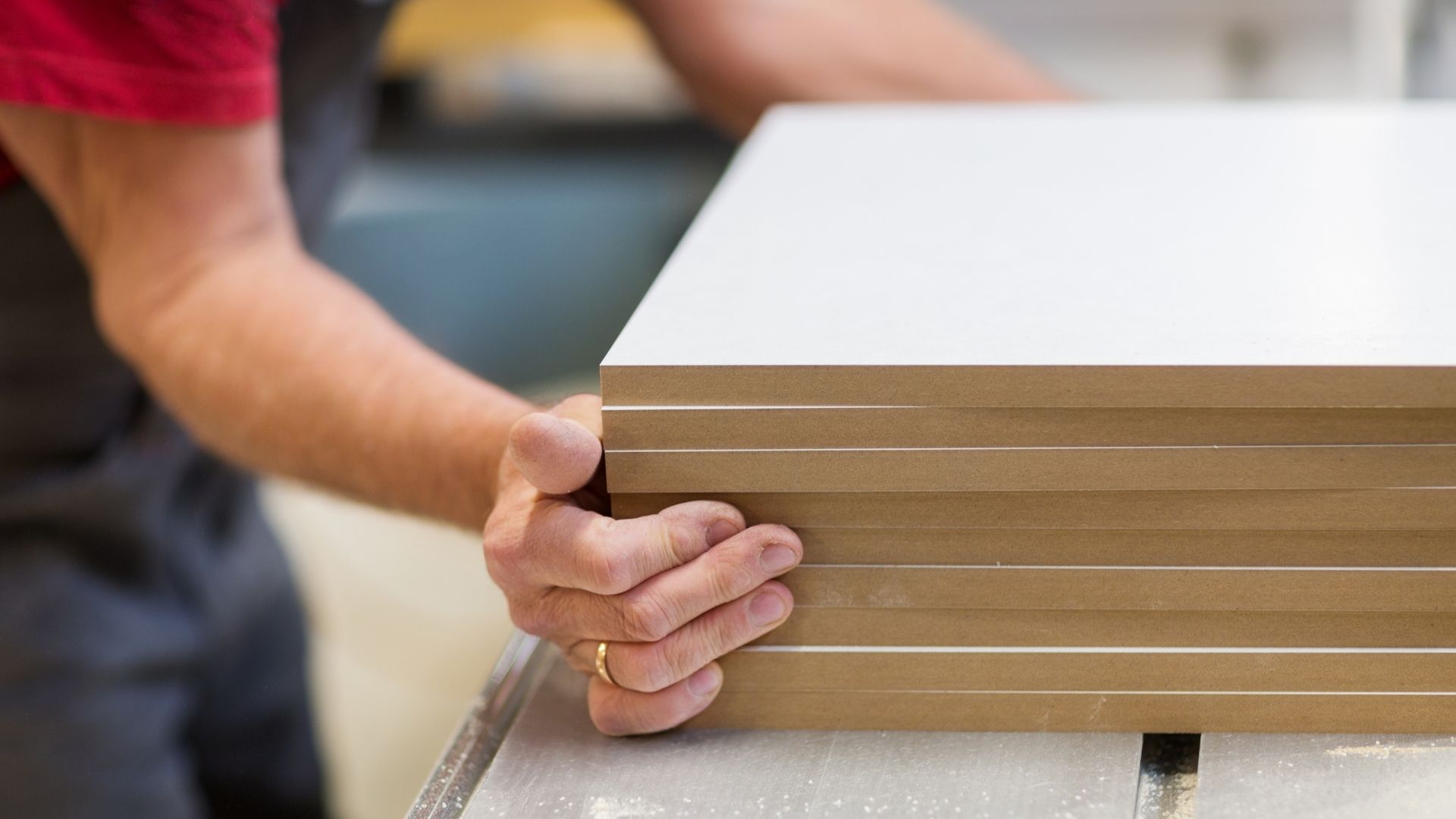Understanding MDF: What It Is and How It’s Made

Medium-density fibreboard, commonly known as MDF, is a staple in modern construction, furniture making, and cabinetry. But what exactly is MDF, and how is it different from plywood or real wood? In this article, we’ll explore how MDF is made, its manufacturing process, and the advantages and disadvantages of using this versatile material.
What is MDF?
Medium density fibreboard is an engineered wood product manufactured from wood fibres mixed with resin and sometimes wax. Unlike solid wood or plywood, MDF does not contain knots and grain, giving it a smooth finish that is ideal for painting and decorative applications. MDF boards are a panel product used for cabinetry and furniture, shelving, moulding, and more.
MDF is denser than particle board but not as high density as some other wood sheets, making it a balanced choice for furniture production. The type of wood used can vary, but most MDF is manufactured from compressed wood fibres, often sourced from natural wood or wood veneer offcuts.
How MDF is Made
The process of making MDF starts with breaking down wood into fine and lightweight fibre, sometimes chips that are too small for other uses. These wood fibres are then combined with resin and wax, forming a wood panel product.
Next, the mixture is sent to a hot press where high temperatures and pressure are applied. This heat and pressure bonding creates medium-density boards with consistent thickness and structural strength. The manufacturing process can also produce moisture-resistant MDF or resistant MDF for specialised applications.
The layered construction of engineered wood products allows MDF to be a versatile material. After pressing, the boards are cooled, trimmed, and sanded for a smooth finish, making them ready to be cut, shaped, or veneered.
MDF vs Plywood: Understanding the Difference
When deciding between MDF and plywood, it’s important to know the difference between MDF and plywood.
- MDF is denser and has no knots or grain, providing a fine wood surface perfect for painting.
- Plywood is a layered construction of thin wood veneer sheets glued together, which can make it stronger and more resistant to moisture.
If you’re unsure whether to use MDF or plywood, consider the specific needs of the project. MDF is excellent for internal furniture making, cabinetry, and decorative mouldings, whereas plywood is better suited for structural applications, floors, and areas exposed to moisture.
Benefits and Drawbacks of MDF
MDF offers a number of advantages:
- Smooth finish that works well with paint and veneer
- Versatile material suitable for furniture production, cabinetry, and decorative moulding
- Consistent thickness without the imperfections of real wood
- Engineered wood product that can be tailored to the specific needs of the project
That said, MDF comes with a few minor drawbacks to consider:
- Tends to swell when exposed to water unless it is moisture-resistant MDF
- Not ideal for high-load floors compared to plywood
- Can be dusty when cut and requires proper machinery

Applications of MDF
MDF can be used in a wide variety of wood product applications. It’s commonly found in furniture making, cabinetry, mouldings, shelving, and even as floor panels in certain cases. MDF sheets can be veneered with wood veneer to mimic real wood or laminated to create engineered wood products that fit any décor style.
Thanks to its fine and lightweight fibre, MDF is a popular choice for furniture and decorative projects where a smooth finish and precision are required. Unlike solid wood or plywood, MDF does not have knots or irregular grain, making it easier to machine and shape.
Types of MDF Available
There are several types of MDF available, each suited to different projects:
- Standard MDF – ideal for internal furniture making and cabinetry
- Moisture-resistant MDF – suitable for areas with high humidity, like kitchens and bathrooms
- High-density MDF – offers enhanced structural strength for heavier applications
- Fire-resistant MDF – formulated for projects requiring added safety
Choosing the right engineered wood product ensures your project performs well and meets your design requirements.
MDF and Sustainability
MDF is made from wood fibres and resin, often sourced from natural wood offcuts or chips that are too small for other uses. This makes it an environmentally friendly wood panel product that reduces waste and supports sustainable timber practices. By using engineered wood products, builders and DIYers can enjoy a versatile material while helping minimise the impact on natural wood resources.
Is MDF Right for Your Project?
Whether to choose MDF or plywood depends on your project’s requirements. MDF is a popular choice for cabinetry and furniture, moulding, shelving, and other wood products where a smooth finish is essential. Plywood may be the better option for structural applications, floors, or areas exposed to moisture.
By understanding how mdf is made, its manufacturing process, and its advantages and disadvantages, you can confidently select the material to use for your next project. MDF offers versatility, ease of use, and the potential to create stunning furniture and cabinetry, making it a key engineered wood product for modern construction and design.
For high-quality MDF boards, wood panels, and other engineered wood products, Worldwide Timber Traders provides a full range of MDF sheets, plywood, veneers, and timber to meet your specific needs for the project. Contact us today.
Related articles

Blog title heading will go here

Blog title heading will go here


